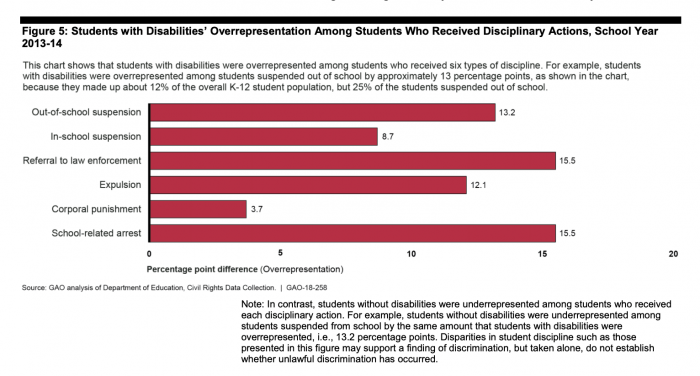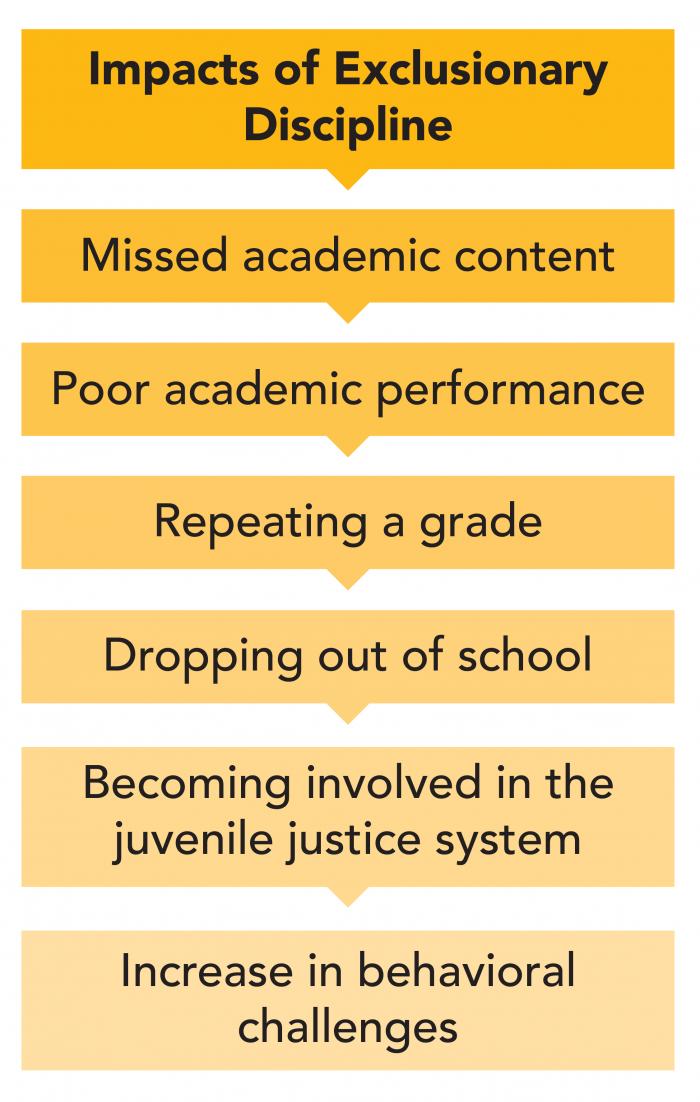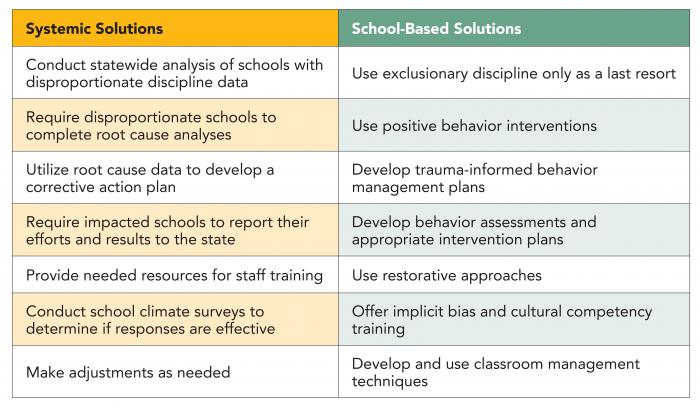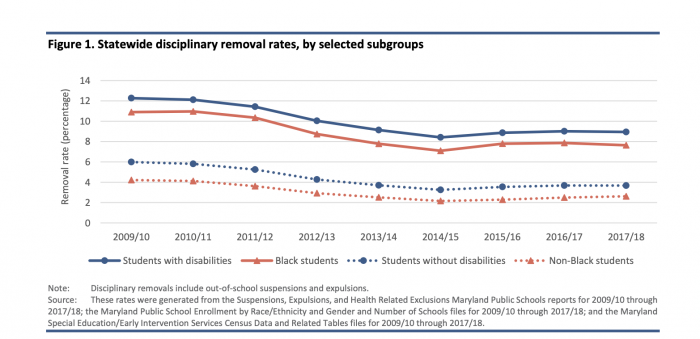Disproportionate Discipline of Students With Disabilities
Authors: Alyssa Navarrete Thorn, Esq.; Madeline Carr, UCEDD trainee
Background
Students with disabilities are removed from classroom settings through suspensions and expulsions at a rate that is disproportionate to that of their nondisabled peers. Suspensions, expulsions and other forms of discipline in which a student is removed from their classroom setting are often collectively referred to as “exclusionary discipline.” Disparities in exclusionary disciplinary practices are widespread and occur nationwide. Students with disabilities experience exclusionary discipline disproportionately to their representation in school populations. Despite laws meant to provide appropriate accommodations in the school setting for students with disabilities, such as the Americans with Disabilities Act (ADA) and the Individuals with Disabilities Education Act (IDEA), discipline disparities persist.
A compounding issue that is interrelated with exclusionary discipline is referrals to law enforcement. When a school deems that a student’s conduct is particularly egregious, it has the option to report the student’s conduct to local law enforcement. Unsurprisingly, since students with disabilities experience disproportionate rates of discipline, they also experience a disproportionately higher rate of referrals to law enforcement.

Harmful Impacts of Exclusionary Discipline
Exclusionary discipline practices can have a myriad of negative impacts on students with disabilities, including, but not limited to, decreased academic performance, behavioral issues and higher drop-out rates. Research has demonstrated that students who experience exclusionary discipline are increasingly likely to experience negative consequences.

Alarmingly, research has demonstrated that if students who experience exclusionary discipline do become involved in the juvenile justice system, sometimes referred to as the “school-to-prison pipeline,” this can cause an overall lower lifetime earning potential, as well as added costs to society through incarceration and/or lost tax revenue.
Addressing Disproportionate Discipline of Students With Disabilities
There are many ways to address the disproportionate discipline of students with disabilities, both at a systemic level and within each school building. School systems can and must adopt procedures for reviewing and analyzing discipline data within their boundaries to determine any disparities. If disparities are discovered, school systems must create actionable plans to remedy those disparities as soon as possible.
In addition to these systemic changes, however, schools can also reduce the use of exclusionary discipline overall, thereby reducing the impact to all students, including those with disabilities. Restorative approaches and methods that focus more on positive behavioral interventions and effective classroom management techniques have been shown to be more effective than exclusionary discipline practices at correcting student behavior.

Case Study: Maryland
In 2014, Maryland passed a set of regulations addressing the disproportionate disciplinary practices of students with disabilities and students of color occurring throughout the state. The regulations sought to identify which schools were engaging in disproportionate discipline practices. Further, the legislation required those schools that were identified as disproportionate to develop plans of corrective action to reduce disproportionality within one year, and to eliminate it from their school within three years.
Over time, data has shown that the use of exclusionary discipline has been reduced throughout Maryland. However, disparities persist for students with disabilities and students of color. While the overall trend of reducing the use of exclusionary discipline is positive, Maryland (like many states nationwide) still has a great deal of work to do to eliminate these disparities for students with disabilities and students with color..

References
United States Government Accountability Office, Report to Congressional Requestors, K–12 Education, Discipline Disparities for Black Students, Boys, and Students with Disabilities, March 2018
Disabling punishment: The Need for Remedies to the Disparate Loss of Instruction Experience by Black Students with Disabilities, The Center for Civil Rights Remedies at the Civil Rights Project, Charles Hamilton Houston Institute for Race and Justice, Daniel J. Losen, April 2018
REL Mid-Atlantic, Disproportionality in school discipline: An assessment in Maryland through 2018, September 2019
